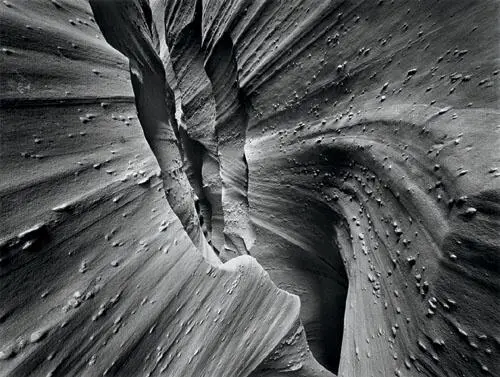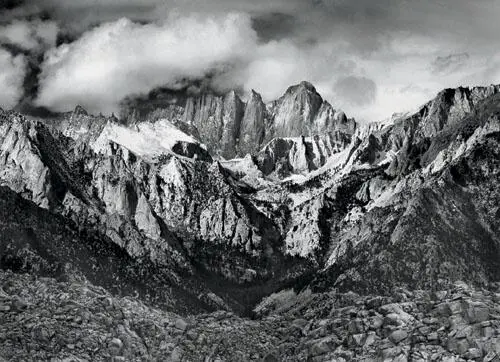Bruce Barnbaum - The Art of Photography - An Approach to Personal Expression
Здесь есть возможность читать онлайн «Bruce Barnbaum - The Art of Photography - An Approach to Personal Expression» весь текст электронной книги совершенно бесплатно (целиком полную версию без сокращений). В некоторых случаях можно слушать аудио, скачать через торрент в формате fb2 и присутствует краткое содержание. Жанр: Старинная литература, на английском языке. Описание произведения, (предисловие) а так же отзывы посетителей доступны на портале библиотеки ЛибКат.
- Название:The Art of Photography: An Approach to Personal Expression
- Автор:
- Жанр:
- Год:неизвестен
- ISBN:нет данных
- Рейтинг книги:5 / 5. Голосов: 1
-
Избранное:Добавить в избранное
- Отзывы:
-
Ваша оценка:
- 100
- 1
- 2
- 3
- 4
- 5
The Art of Photography: An Approach to Personal Expression: краткое содержание, описание и аннотация
Предлагаем к чтению аннотацию, описание, краткое содержание или предисловие (зависит от того, что написал сам автор книги «The Art of Photography: An Approach to Personal Expression»). Если вы не нашли необходимую информацию о книге — напишите в комментариях, мы постараемся отыскать её.
The Art of Photography: An Approach to Personal Expression — читать онлайн бесплатно полную книгу (весь текст) целиком
Ниже представлен текст книги, разбитый по страницам. Система сохранения места последней прочитанной страницы, позволяет с удобством читать онлайн бесплатно книгу «The Art of Photography: An Approach to Personal Expression», без необходимости каждый раз заново искать на чём Вы остановились. Поставьте закладку, и сможете в любой момент перейти на страницу, на которой закончили чтение.
Интервал:
Закладка:
Another way for photography to reach the realm of art is through abstraction. Abstraction, as stated in the definition, immediately removes a photograph from the realm of documentary realism. Good photographic abstraction requires tremendous insight to be effective. Anybody can photograph small portions of things to produce an unrecognizable image, but only when the image has both compositional strength and that almost indefinable commodity known as internal conviction does it prove to be a work of art.
Abstraction implies imagery in which the inherent qualities of the subject matter are separate from the physical object. The Bodie photographs lacked this characteristic. In contrast, the slit canyon photographs possess that quality. At times I saw their swirling lines and forms as the paths traced by dust particles and gases that coalesce into planets, stars, or whole galaxies, and at other times as the heavenly bodies themselves, or as the forces that move these objects about. I attempted to strengthen that vision by eliminating any references to place—i.e., to the eroded sandstone or to documentation of the canyons (Figure 15-5).
The slit canyon photographs are virtually devoid of scale. Few people can tell with any certainty whether the area photographed is large or small, and most people who have expressed their perception of size to me have been woefully wrong. The uncertainty of scale is intentional on my part. I want the viewer to become involved in the flow of forms and forces, and in the cosmic aspect that I feel in the imagery—not to become involved in thoughts about the canyons themselves. I have consciously removed scale from the images by using lenses that distort scale and by excluding objects that would indicate size. In much the same way, few of the images have an easily identifiable orientation. It’s hard to say with certainty whether the view is straight ahead, up, or down.

Cosmologists tell us that planetary systems, such as our own solar system, are accretion disks of gases, dust, and rocks surrounding a star that coalesce over millions of years into planets and other smaller bodies that revolve around the star in fixed orbits. This photograph is my vision of a several-million-year time-lapse image as that swirling mass of un-consolidated debris becomes planets, moons, and other solar objects .
Figure 15-5. The Pinwheel, Spooky Gulch
The Strength of Abstraction
By seeing the canyons as analogies of the universe, from the subatomic to the cosmic, I photographed them in a particular way—a way that I would not have considered otherwise. They had a further meaning—surely a deeper meaning—to me. Minor White once said, “You photograph something for two reasons: for what it is, and for what else it is.” (I’ve quoted this previously, but it’s worth quoting again in this context.) I photographed the slit canyons specifically for what else they were. Because they are abstractions, other people see things in them that I never saw or could have imagined. One man thought they were wood details. One woman, a marine biologist by training, was reminded of underwater life forms she had studied. I’ve been amazed at the variety of responses, and I’m pleased by the spread of interpretations that the images afford. Each viewer brings his or her own background and imagination to the interpretation, thereby enriching me with alternative insights and interpretations.
It’s been my observation in dealing with workshop students over a period of more than thirty years that beginners tend to shy away from abstraction in photography because they feel it lacks emotional value. They may be thinking in terms of cold design constructions, for it’s simply not true. Photographic abstraction can be rich with emotion. The best way to explain this is by analogy. Surely music is the ultimate abstraction. It’s nothing more than sounds and rhythms. Yet it’s so much more. Who can listen to Beethoven’s Fifth Symphony without being filled with awe; to Gottschalk’s piano pieces without a feeling of delight; to Grieg’s lyric suites without feelings of joy and serenity? Music of all types fills us with emotion, but where does the emotion come from? Perhaps it is within us, and the music simply unlocks it. I believe that photography can do much the same. Abstract photography may be able to do it as well—or better—than realistic photography for it may be subject to wider interpretation.
I doubt that photographs can unlock emotion in the viewer if there is none within the photographer—either in the initial seeing or in the ongoing process toward the final print. It is this inherent feeling within the photographer that I referred to earlier as “internal conviction”. I can’t go out and photograph an arbitrary section of something as an abstraction, then expect anyone else to respond to it intellectually or emotionally if I had no internal response to it myself.
That was my problem with the Bodie images. I was dealing with textures, tonalities, lines, forms, balances, and other aspects of composition, but not with real emotion. I thought I felt them strongly for several years, but in time I realized I didn’t. (Most likely I was just pleased that they were different from my other photographs.) Internal conviction is like love at first sight: It always seems perfect when you’re in the midst of it, but as time goes by you may see it differently. Whether the canyon and cathedral photographs qualify as art is not for me, but for others, to decide. But I can say this: They are honest and they are deeply meaningful to me. They depict the essence of the two subjects as I see and feel them. To me, that’s the most important thing.
What about my multiple negative composites: Are they honest? I think so. They depict whole landscapes I would love to see. In other words, they convey my imagination or vision of the way I would like to see the world. Isn’t that the essence of literature? Is a Brahms string quartet honest? Does it depict reality? Foolish questions, aren’t they? In my composite images I’ve created landscapes that elicit a response in me, as a Brahms quartet surely elicits a response in me. If it also elicits a response in the viewer, so much the better.
Note
I doubt that photographs can unlock emotion in the viewer if there is none within the photographer .
It’s interesting to note that while painting has long since departed from realism, the work of a realist like Andrew Wyeth is highly valued. The revelation in 1986 of his Helga paintings further enhanced his artistic stature with the general public. Yet critics find it hard to assess his work. One of the problems that critics face is that they must make immediate assessments without the perspective that history affords. All we have to do is look at the initial critical response to the impressionists, pointillists, surrealists, etc., to see how wrong immediate assessments can be! Still, it’s my contention that most critics can’t deal with his work because they seek to label it, and the only applicable label is pre-20th century representationalism. They can’t come to grips with the fact that realism can be fine art if it shows heightened insight and sensitivity. Wyeth’s work has that innate quality; most critics do not.
The key difference between Wyeth’s art and the presidential portraits referred to earlier is that Wyeth’s work shows character and feeling, whereas most presidential portraits show a face and nothing more. But then again, considering some of our recent presidents, one wonders if there is more!

Интервал:
Закладка:
Похожие книги на «The Art of Photography: An Approach to Personal Expression»
Представляем Вашему вниманию похожие книги на «The Art of Photography: An Approach to Personal Expression» списком для выбора. Мы отобрали схожую по названию и смыслу литературу в надежде предоставить читателям больше вариантов отыскать новые, интересные, ещё непрочитанные произведения.
Обсуждение, отзывы о книге «The Art of Photography: An Approach to Personal Expression» и просто собственные мнения читателей. Оставьте ваши комментарии, напишите, что Вы думаете о произведении, его смысле или главных героях. Укажите что конкретно понравилось, а что нет, и почему Вы так считаете.












